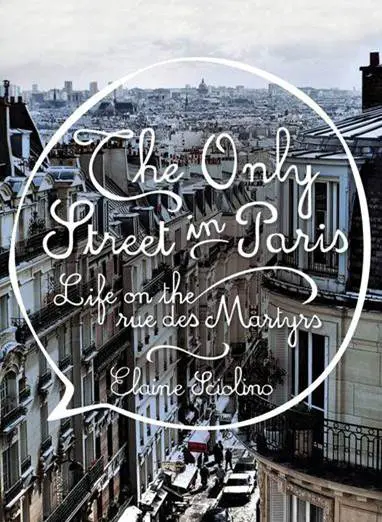
Photo credit: Janet Donovan
“Elaine has been a great friend for a long, long time. We bump into each other at every corner of our lives. And now, in a very strange reverse way, I’m in Washington DC, she’s in Paris,” said H.E. Gérard Araud, The Ambassador of France, at a reception in honor of Elaine Sciolino, author of The Only Street in Paris: Life on the rue des Martyrs. They have been friends for 45 years and though the occasion fell on the heels of the Paris tragedy, it was also a celebration of those who love Paris and France.
“I simply want to say to you personally, but also to all Americans, how grateful and how moved we have been by the outpouring of friendship towards my country. Actually, you Americans are quite a compassionate people and you have shown it again in this unfortunate, horrible, horrible attack. So thank you again. Thank you very much.” Amb. Araud added.
Andrew Plump with his wife Elaine Sciolino and Amb. Gérard Araud
Sciolino is the former Paris bureau chief of The New York Times. The book is about a small street in Paris. Her favorite reference to the street is: “I can never be sad on the rue des Martyrs.” She explains: “While many cities suffer from the leveling effects of globalization, the rue des Martyrs maintains its distinct allure.” She reveals ‘the charms and idiosyncrasies of this street and its longtime residents―the Tunisian greengrocer, the husband-and-wife cheese mongers, the showman who’s been running a transvestite cabaret for more than half a century, the owner of a 100-year-old bookstore, the woman who repairs eighteenth-century mercury barometers―making Paris come alive in all its unique majesty. The Only Street in Paris will make readers hungry for Paris, for cheese and wine, and for the kind of street life that is all too quickly disappearing.’
“The key to life is the journey and not the destination,” responded Elaine. “I thank all the Parisians who live and work on the rue des Martyrs because they shared their stories and welcomed me into their homes and shops. They gave me lessons about food, wine, history, religion, family, and about gilding wood, sharpening knives, collecting books, even trapping mice. Most of all, just like Gérard has done, they gave me their trust. This evening we are together at the home of France in Washington. It’s a time to mourn and to honor the victims of the terror attacks of November 13th; but it is also a time to celebrate a way of life…the French way of life. After the attacks, the terrorists condemned Paris as a capital of abominations and perversions. They could have been talking about the rue des Martyrs.”

The author continued by reading an excerpt from her book: “If you will allow me, I’d like to read a brief excerpt from my book that captures this spirit of resilience. I wrote it shortly after the terrorist attacks in Paris last January. When terrorists struck Paris in 2015, the neighborhood mourned. Merchants up and down the rue des Martyrs taped black and white signs with the words Je Suis Charlie…I Am Charlie…to their windows. It has become the universal slogan of solidarity with the satirical newspapers Charlie Hebdo, the terrorists’ first target. The second target was a Jewish supermarket. Police armed with machine guns were stationed in front of the rue des Martyrs residence of a part-time Charlie Hebdo columnist, who survived the attacked. The office of my friend Jamie Shaul Rosenfeld was a few doors away. Rosenfeld was a child living in Paris when the Nazis occupied France. He was forced to wear a yellow star of David that identified him as a Jew. After the terror attacks, he joined a solidarity march of more than one and a half million people in Paris. Many marchers carried signs saying Je Suis Charlie.”
The book signing
“Some marchers proclaimed something different: Je Suis Juif, I am Jewish. ‘I am a citizen of France,’ he told me. “I believed it then, and I believe it now. More than 2 decades later, the atmosphere would sour. Zola would risk his future to defend Alfred Dreyfus, a Jewish army officer who has been falsely accused and convicted by an anti-Semitic military court, of selling secrets to Germany. But on this glorious day in March 1876, Zola was hopeful.” This is what he wrote: ‘Seeing Paris filled with wonder and respect, crowding into the synagogue, I thought of one thing – the hatred to which the Jews had been subjected during the Middle Ages, but it must be added that time has marched on, and civilization and justice have gained ground.'”